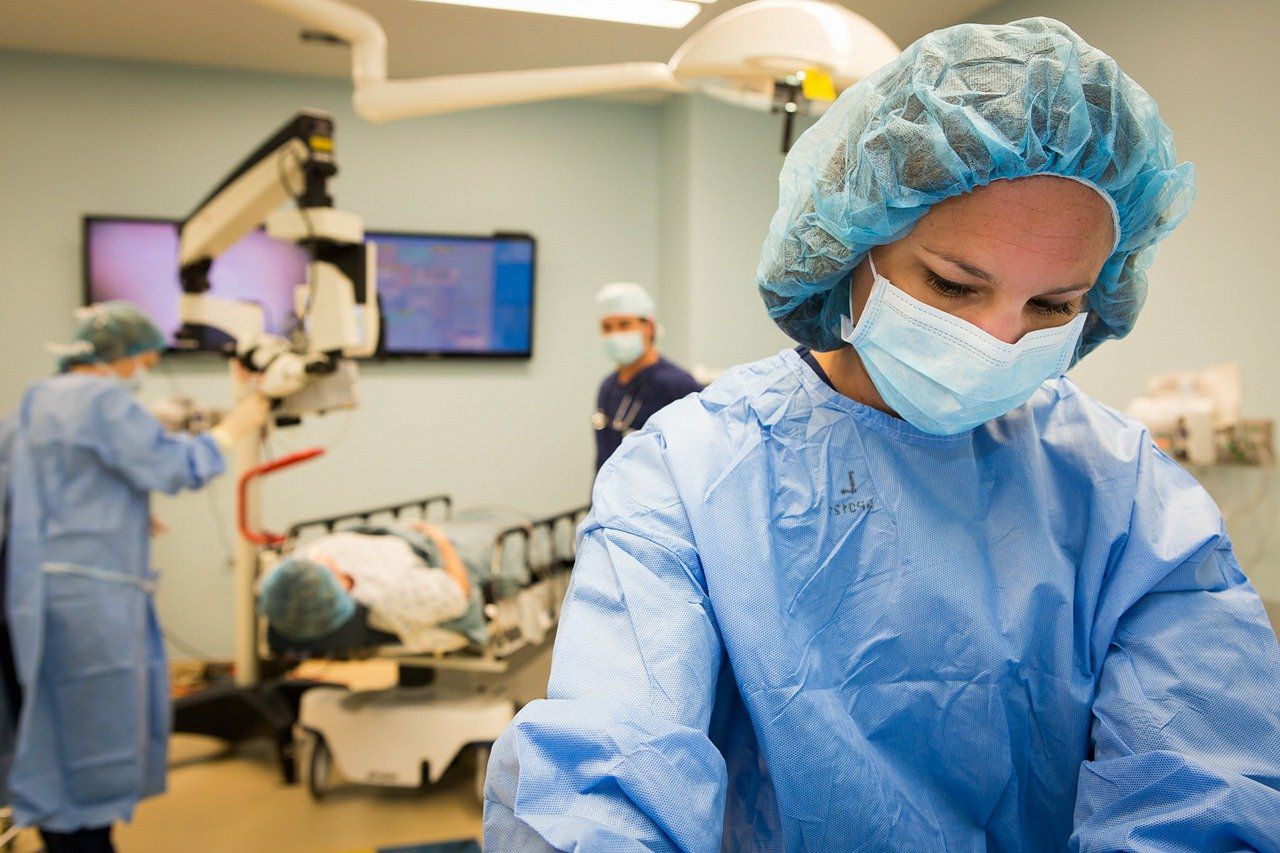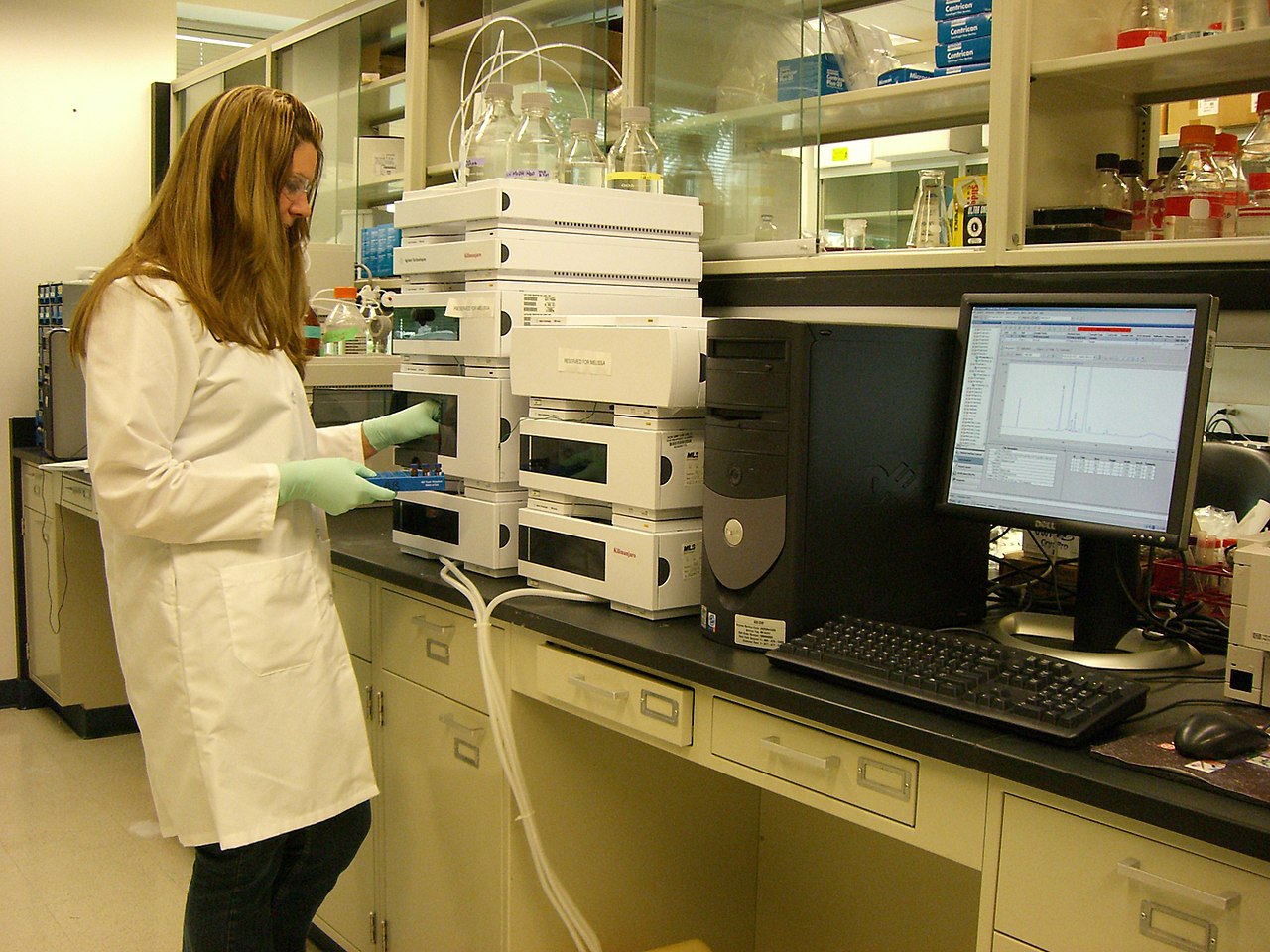Connected and AI driven healthcare (Healthcare 4.0)
Healthcare is a multidimensional and crucial sector of our lives that has evolved over time. In the healthcare ecosystem, patients, doctors, hospitals and research institutions are all in the business of medical research, hospital management, medical diagnosis, drug prescription and also disease prevention and control. To be able to effectively perform these important medical services, a country’s healthcare system requires highly skilled expertise in each field which most of the time is very expensive. That could be the reason why many healthcare systems provide poor services to ailing nations.

Smart healthcare incorporates the use of AI, Internet of Things and many more emerging technology to not only reduce the cost of healthcare but also greatly increase the quality of services rendered. Smart healthcare gives the required special focus in all facets of the medical industry and gives the required specialties in their optimized measure. The different spheres precisely tackled include disease monitoring, precautionary healthcare, healthcare facilities management medical research and much more. In this article we will be looking at the use of the following smart technologies in smart healthcare to improve the diagnosis, prevention, research, control and treatment in the lives of doctors, patients, hospitals and research institutions:
- Internet of Things;
- AI;
- Big Data;
- Cloud Computing;
- Robotics;
- Mixed Reality; and
- Modern biotechnology.
Use of AI in smart healthcare
AI involves the utilization of machines and programs that analyze situations and offer intelligent solutions by working and reasoning like human beings . PwC projects that healthcare will be one of the sectors that will tremendously benefit from AI by 2030. Here is how.- The doctor is tasked with the very important role of deciphering a medical condition and coming up with an elaborate medication that will lead to a successful treatment.
- The comfort, and to a great extent, the lives of patients are at stake if any doctor makes wrong diagnosis and prescriptions.
- Smart Healthcare through AI offers intelligent algorithms either in computer systems or robots to aid the doctor in making informed decisions.
- Hospitals and the general healthcare system also benefit from AI through a great improvement of service delivery and optimization of resources.
- With the help of Internet of Things, systems in the hospital continually receive valuable information on patient condition and even feedback of services and therefore have the opportunity to continually learn and improve by themselves. This helps medical service providers to be in the constant know of what service to offer at any time and what best way to offer it.
- Machine learning algorithms in medical equipment get to study and continually learn on matters relating to a patient’s condition. This greatly helps not only in improving the accuracy of subsequent visits but also in optimizing the services rendered to the patients.
- Through AI the radiotherapy process of a patient’s treatment is monitored by smart radionics in the machine in real time. The information obtained from this monitoring is used by hospitals to optimize this process by offering personalized radiotherapy. In depth observations are also made thereby eliminating any uncertainties.

In the medical research field , AI makes life easier in the processes of drug discovery and clinical trials. Instead of a physical screening and combinations, smart and intelligent algorithms are able to automatically synthesize various compound combinations to effectively come up with medicine and vaccines faster. There won’t be any need to waste time on testing the eligibility of volunteers in clinical trials because the smart algorithms can be able to quickly and efficiently screen and filter out the unqualified. AI truly has the ability to revolutionize the health sector. According to McKinsey, AI will have the biggest impact in chronic care management, self-care prevention / wellness, triage and diagnosis, diagnostics, clinical decision support and care delivery. AI is also gaining the interest of venture capitalists, recent statistics show that venture capital firms have funded AI projects in healthcare up to USD 8.5 billion.
IoT in healthcare
Being in constant communication with the patient and other stakeholders is key in the delivery of efficient services in the medical field. The Internet of Things provides a platform where doctors, patients, hospitals and researchers communicate with both the internet and each other through planted sensors. Smart healthcare through the Internet of Things will allow for the integration of various systems, fast and efficient exchange of information and ability to input corrective measures in specific systems. Sensors allow this to happen by collecting real time information and sending it to supercomputers for processing.The traditional way of monitoring diseases would be a scenario based approach by the doctor which depends on what the patient reveals. This method is prone to error and can lead to misdiagnosis and failure to predict specific ailments. Sensors in wearable devices can be able to continually collect real time invaluable data on a patient’s condition and avail it to a programmed system that the doctor studies. The doctor is therefore given the power to be in the constant know of a patient’s holistic health condition. Through this easy monitoring, risks and complications are greatly reduced while at the same time alarming symptoms are spotted from far.
The Internet of Things compliments Big Data by being the means through which important information is collected. The sensors used in collecting data give doctors access to vast amounts of data that can be used to predict ailments and make well informed diagnosis and prescriptions.
The ability of sensors to be incorporated into wearable devices, smart phones and into home infrastructure allowing for portability makes Internet of Things a rich resource for patients. The wearable devices and smart phones monitor a patient’s health and report on this information to relevant stakeholders. Physiological process are reported on in real time such that any deviation from the normal is immediately noticed and aversive measures immediately applied. Sensors incorporated into a housing infrastructure could turn a smart home into a safe space for the elderly and disabled. Special care is provided to this group by allowing for monitoring of their physical environment and health. This helps a lot with greatly reducing dependence on healthcare providers and improving on living experience. The Stress Detection and Alleviation System is an example of wearable sensors being used to monitor the blood pressure levels of patients prone to heart attacks and other related diseases. Once noticing a real deviation from normal stress levels, this system not only notifies relevant stakeholders on something being wrong but also triggers measures to reduce stress levels.
The medical ecosystem is managed more efficiently with the integration of various stakeholders in the medical field. Various devices are connected to the internet through sensors and thus creating a dynamic access to relevant information from different fields. Data is contrasted from different sources and digital collaboration is made possible.
Application of big data analytics, cloud computing and the 5G network in smart healthcare
Nothing is more important than having all your facts right in the medical industry about a specific condition. Any miscalculations and mistakes in the diagnosis, prescription or even research results could lead to devastating disasters. There is a lot of information that needs to be accounted for by a large group of people from different fields and hence the need for organization. Big data analytics offers the tools to manage and process high volume information in real time in a way that is structured and secure. Smart healthcare allows for real time and in depth monitoring of valuable patient data and also effective management of resources in a medical ecosystem.The information that surrounds a patient and that is very important to a medical practitioner includes:
- the medical history;
- age;
- gender;
- present conditions and much more

Image credit: Icos laboratories
In hospitals, integrated data management platforms have proven to be effectual in saving costs and time and also improving the quality of service. Programs such as Laboratory Information Management System (LIMS), Picture Archiving and Communications Systems (PACS) and Electronic Medical Record help relevant and authorized service providers to access important information in real time and in an organized way from different departments of a hospital. These platforms go on to feed into an overall framework that allows for digital collaboration. Through this overall framework, doctors, patients, researchers, lab techs, and other service providers can be able to constructively engage with each other remotely. All these people representing different facets of the healthcare industry are given the power to be able to easily access valuable information and thus able to make informed decisions and provide quality services. With such platforms available, patients will also be made available to rich and credible sources of information and can now even access telemedicine.Big data analytics tools also allow for predictive disease trends and symptom development. Medical researchers can now easily gather loads of information and dynamically analyze them. Predictive analysis can then be utilized to show the trends of a particular disease and how to curb it.
Application of robotics, mixed reality, micro-electronics and virtual assistance in smart healthcare
In order to achieve high levels of accuracy and provide effective care to patients, the healthcare industry will require all the physical help they can get. AI programmed robots are being utilized by various medical fields to help in technical and exhaustive tasks. Mixed reality provides a real link between physical and digital worlds thus giving healthcare givers more power in performing tasks. Virtual assistance programs like Siri already exist and are being heavily utilized to enhance customer experience but can also have a great impact in service delivery in the medical arena.Surgical robots are on the rise. Advanced robotic technology is being used to stretch the flexibility and accuracy that doctors already have. This enables surgeries and other medical procedures to be performed with a higher precision than traditional means. Many of these assistant robots provide a high definition 3D viewing of any procedure being undertaken and thus aids the doctors visually too. The Da Vinci System approved by the Food and Drug Administration provides intuitive surgical assistance in many surgical procedures. The Sensei X Robotic Catheter System also works in the same way to steer and guide doctors’ hand motions in order to increase accuracy and precision. This robotic use greatly decreases the frequency of complications in surgeries and also improve the results of many medical procedures.
Image credit: Medical Expo
Robots can also be designed to have other invaluable uses other than surgery like packaging and sorting . The pharmaceutical industry is heavily reliant on how fast drugs are delivered to users safely. However, the tedious process of packaging and sorting especially in warehouses and drug stores proves to be difficult with only human labor. Packaging robots programmed with AI algorithms can be able to perform these exhaustive tasks in record times and with accuracy. Therefore there will not be any wastage of time in delivering drugs to patients in dire need. Mixed reality join hands with robots in giving aid to doctors during medical procedures. The connection between physical and digital world that they give doctors goes a long way in providing invaluable insight on medical procedures. Surgeries are performed with higher precision when the doctor is able to model a specific set standard for a surgery process and projecting in real time to be able to guide the surgical team. These surgeons enjoy a lot of flexibility and structured guidance from mixed reality technology. Professor Ye Zhewei of Wuhan Union hospital is celebrated to be the first to successfully incorporate mixed reality in a hip surgery of teenager.Virtual assistance technology and chat-bots aim to provide invaluable medical information to patients seeking help at any time thus improving in remote service providing. Well researched medical information is programmed into virtual assistants paving way to virtual consultations without privacy infringements and third party involvement. Tough medical rhetoric can be converted into common everyday language to allow patients fully understand conditions they are going through hence virtual assistants act as a much needed bridge between patients and doctors. Virtual assistants an also save a lot of manpower in a hospital environment by being physical information resources. The technology could be programmed into physical devices in hospital corridors where questions raised by patients are responded to at any time of the day.
Modern bio-technology
The Nobel Prize in Chemistry 2020 went to Emmanuelle Charpentier and Jennifer A. Doudna for developing the Clusters of Regularly Interspaced Short Palindromic Repeats (CRISPR) Genetic Scissors. This mind blowing technology gives human beings the power to change the DNA of living organisms. CRISPR’s revolutionary concept ushers the human race into an era where generational diseases can be cut off from a patient’s lineage and an era of new efficient cancer therapies.Through AI algorithms and big data analytics, these medical researchers were able to sift through thousands upon thousands of genes in a process called DNA sequencing. Different combinations were tested digitally and the specific genes that adversely affect a human’s health were identified. With all this information, the researchers were able to develop a means to cut, insert, replace or take away an unwanted material from a cell. CRISPR is in simple terms the scissors used to ‘cut’ into the genes to allow for changing of the DNA. Medical research takes a new direction with this smart empowered innovation. Human diseases can now be mimicked and long term solutions obtained leading to the eradication of some very serious diseases. Insurance companies and their customers also benefit a lot from smart healthcare. Connected devices and data analytic systems can be programmed to correctly record data that become very important during insurance claims and calculation of premiums. The patient is therefore not overcharged and the insurance company and hospital are paid their deserved cash. Insurance costs could also reduce for the patients as they could opt to ‘sell’ their monitored data to insurance companies which they use to study trends and build up business.
Conclusion
As the world keeps developing, the billions of disease causing organisms are not left behind. The rise in human population brings with it increase in chronic and serious diseases. A two pronged approach of balancing management of patients and efforts to eradicate diseases is therefore very important in ensuring the survival of the human race. Orthodox means of dealing with health issues will soon be phased out because of the increasing number of patients and diseases.Smart healthcare brings with it equipped service providers to meet personal needs and therefore and enhanced service experience to customers. Doctors are able to make well informed decisions in diagnosis and prescriptions while hospital managements are able to optimize resource use and intelligently plan an efficient allocation of resources. Digital collaboration and extensive consultation between different fields is made possible together with the development of virtual consultations to benefit patients. Smart healthcare will make efficient medical services ubiquitous.